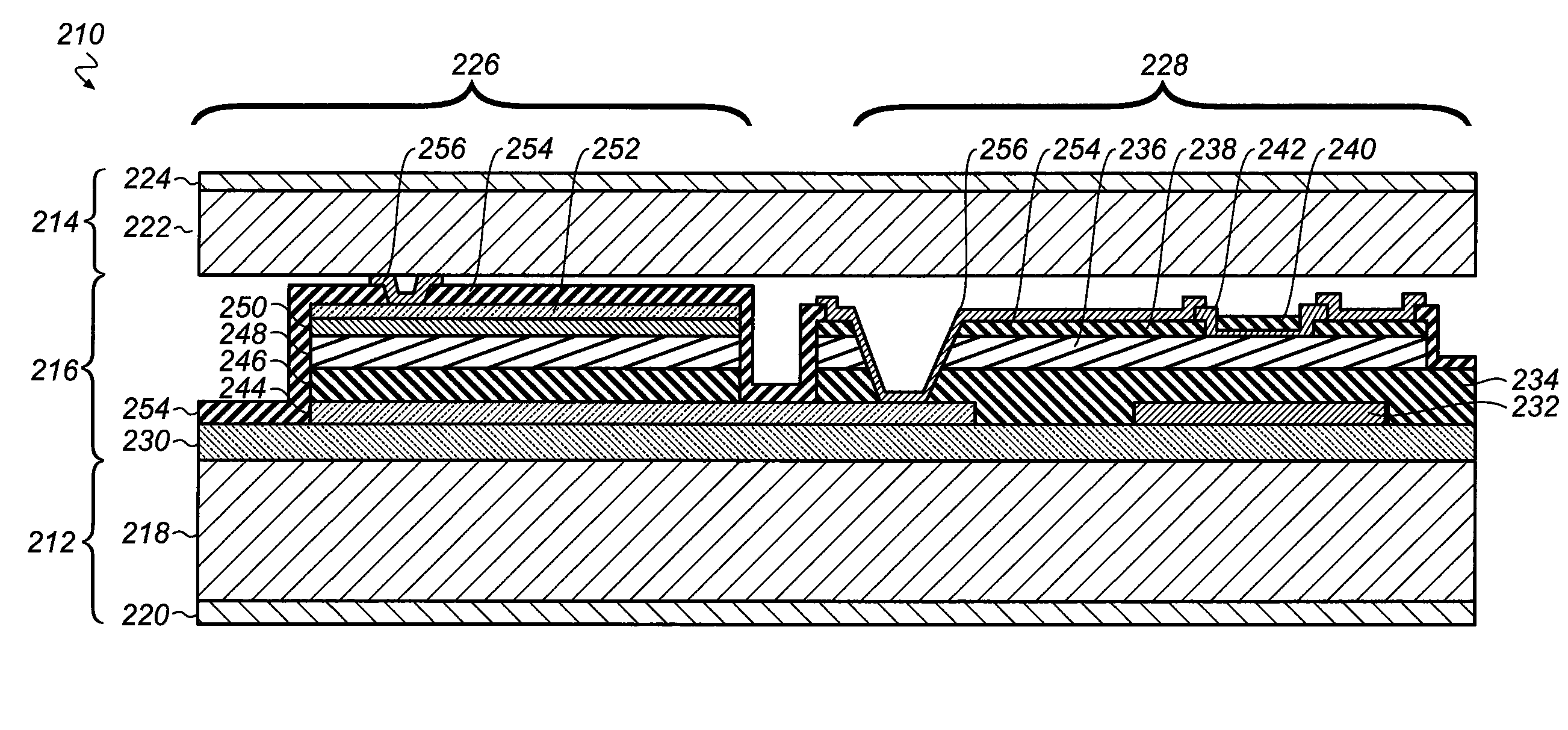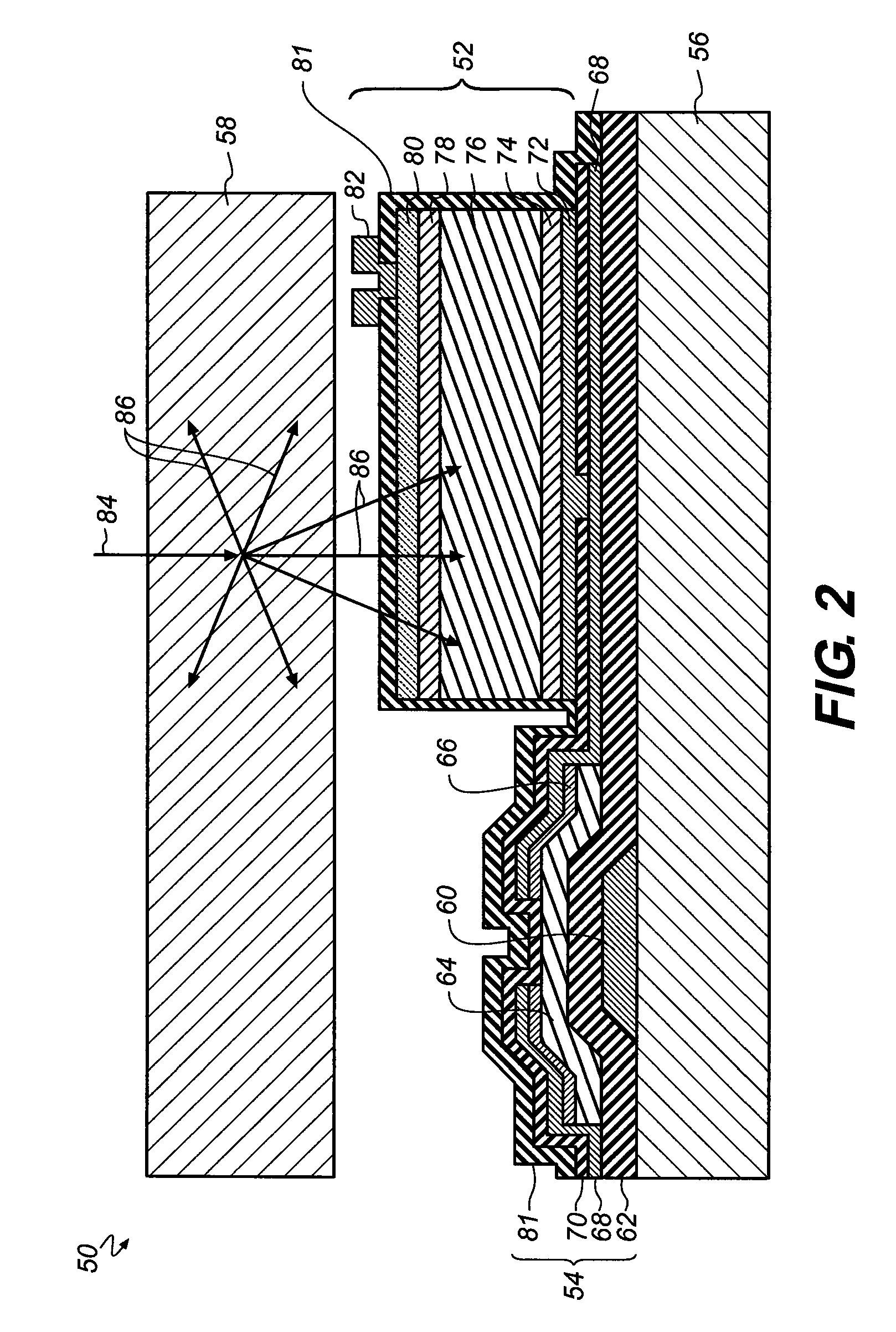Dual-screen digital radiographic imaging detector array
a detector array and digital radiographic imaging technology, applied in the field of digital radiography, can solve the problems of loss of spatial resolution of medical x-ray detectors employing scintillating phosphor screens to absorb x-rays and produce light, and achieve the effects of reducing the loss of spatial resolution, and improving the quality of imag
- Summary
- Abstract
- Description
- Claims
- Application Information
AI Technical Summary
Benefits of technology
Problems solved by technology
Method used
Image
Examples
Embodiment Construction
[0041]Reference is made to commonly assigned, copending U.S. patent application Ser. No. 12 / 025,086 filed Feb. 4, 2008 by Tredwell entitled DIGITAL RADIOGRAPHIC IMAGING APPARATUS.
[0042]The present description is directed in particular to elements forming part of, or cooperating more directly with, apparatuses in accordance with the invention. It is to be understood that elements not specifically shown or described may take various forms well known to those skilled in the art. In the description that follows, terms and phrases such as “above” or “on top of” are used in a broad sense, to indicate an arrangement of layers relative to each other. Certainly, an X-ray imaging plate may be exposed in any orientation, where stacked layers extend in generally horizontal, vertical, or oblique directions.
[0043]FIGS. 5 to 17 show diagrammatic views of various digital imaging devices in accordance with the present invention. A schematic cross-section of a first exemplary embodiment of the invent...
PUM
 Login to View More
Login to View More Abstract
Description
Claims
Application Information
 Login to View More
Login to View More - R&D
- Intellectual Property
- Life Sciences
- Materials
- Tech Scout
- Unparalleled Data Quality
- Higher Quality Content
- 60% Fewer Hallucinations
Browse by: Latest US Patents, China's latest patents, Technical Efficacy Thesaurus, Application Domain, Technology Topic, Popular Technical Reports.
© 2025 PatSnap. All rights reserved.Legal|Privacy policy|Modern Slavery Act Transparency Statement|Sitemap|About US| Contact US: help@patsnap.com



